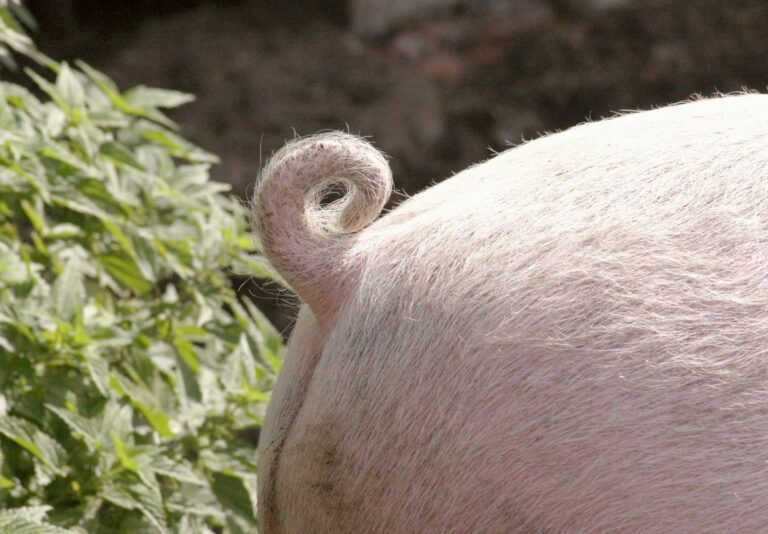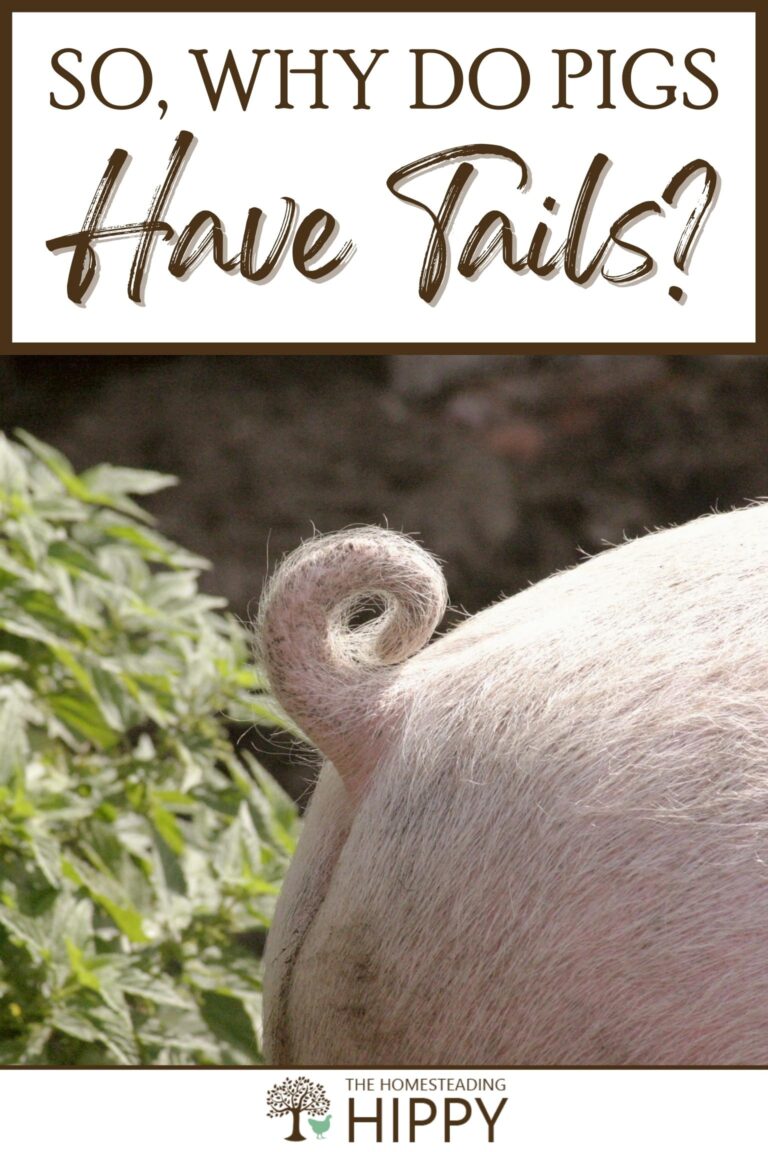Animals have all kinds of tails serving a variety of purposes depending on the environment. Some animals rely on their tails for balance, others rely on it for locomotion.

For some animals, the tail is a vestigial leftover of their development, whereas in other animals it is primarily used for communication.
But then we come to the curious case of the pig, which by all accounts seems to have a tale that serves truly no particular purpose. So why do pigs have tails anyway?
A pig’s tail serves a variety of purposes, from shooing away flies to communication with other pigs and even people.
If you don’t watch it for these subtle signs you might think that a pig’s tail is truly useless, nothing more than a little curly ornament on its back side.
But there is more going on with a pig’s tail than you might think, as they may even be far more important in the hierarchy of a herd than we realize. Keep reading to learn more.
The Purpose of a Pig’s Tail is Debated Today
It probably isn’t the answer you were looking for, but even to this very day, scientists aren’t quite sure what purpose a pig’s tail definitively serves. However, there are a few theories out there.
The first and most likely explanation is that the pig’s tail serves as a fly swatter of sorts. Flies are attracted to the warmth of an animal’s body and its waste products.
A pig’s tail provides another way for the animal to swat away these pesky insects though, compared to the longer tail of cows or the fuller tail of horses, it is pretty poor at the job.
The Tail is Used for Some Communication
The second explanation is that the pig’s tail is used to show status in the herd, believe it or not. Subtle shaping or positioning of the tail can let the other pigs know how it feels about itself.
The pig can also use its tail to let other pigs or people know that it is feeling threatened. This is another way that pigs might avoid, or start fights when called for or signal to prospective mates.
It is also worth pointing out that it is easy to observe the change in the posture or position of the tail in accordance with the pig’s stress level.
The higher the stress or “arousal” the more active the tail tends to be, and it also tends to scrunch up, though this might not be noticeable in pigs with naturally curly tails.
Some Pigs Wag Their Tails When Happy to See You
Certainly one of the most endearing uses of a pig’s tail in communication is with humans. Many owners have observed their pigs wagging or swishing their tails when greeting their owners, assuming of course that they are happy to see them.
Whether this behavior is instinctive or has been learned from long domestication is unknown, and it is also possible that pigs wag their tails because they have seen dogs do it for good outcomes!
On the other hand, pigs that don’t get much human interaction are often seen wagging or swaying their tail for other reasons when around other pigs, usually involving stress or food possessiveness.
The Tail May Help with Balance
Another possibility is that the pig’s tail serves as a sensor of sorts when the animal is running or maneuvering about quickly.
Though on its surface it seems ridiculous considering the build and overall agility of a pig, the theory has more evidence to support it than you might think.
The tail actually contains a cluster of nerves that is located at the end of the spine. This nerve cluster helps the pig to balance, which is essential for keeping it upright and moving forward. Without their tail, a pig’s sense of balance is impaired somewhat.
Some Pigs Have Straight Tails, Others Have Curly Tails
Another thing that puzzles observers is the difference in shape inherent to a pig’s tail. Some pigs have the iconic and cute curly tail, while others have a straight tail that hangs down more like a cow’s. Why the difference?
The difference in tail shape is due to genetic variation that results in the pig’s tail being either curly or straight.
The mutation that causes a curly tail is dominant in some domestic breeds, while the mutation for a straight tail is recessive.
Biologists aren’t quite sure when and where the curly tail first appeared in the genealogy of pigs, but it is thought to have originated in Asia.
The jury is still out on exactly why pigs developed curly tails in the first place, but there are a few other interesting facts about them, namely that they are rarely seen in wild pigs.
This seems to support the notion that the curly tail is nothing more than a genetic artifact reinforced by breeding practices, but the story isn’t quite so simple.
A Curly Tail May Straighten Out Sometimes
If you take a pink, domestic, farm-raised pig and put it in the wild, something interesting happens to its tail over time: it begins to straighten out, along with other physical changes!
In fact, after several generations of pigs living in the wild, their tails become as straight as those of their wild cousins.
This is a highly interesting adaptation that takes place quite quickly. On one hand, it seems to give some weight to the assertion that a pig’s tail changes shape based on factors like stress, but it does not easily explain why a pig that is born with a curly tail loses it once it has gone feral.
Many pigs that have curly tails have them all the time, no matter their apparent mood, while on the farm. Their tails even stay perfectly curly even while completely relaxed, asleep.
So why does a domestic pig’s tail straighten out in this way in the wild? Again, scientists really don’t know.
Whether this is yet another variable quirk of genetics or some unknown response to signals in the pig’s biology, it is a mystery!
Pigs Tend to Go for the Tail in Fights
In a fight among pigs, particularly those in the same herd, another curious phenomenon is witnessed: Rivals tend to target the tail during fights.
Once again, all we have are the theories of experts as to why this happens.
One mode of thought is that going for the tail gives the attacking pig an advantage. The pig can use its teeth to grip the tail of its opponent, which limits the other pig’s mobility.
This makes it easier for the first pig to get in a good bite or two without being attacked itself, or just making the other pig submit.
Another theory states that other pigs know how important the tail really is, and so target it to reduce a pig’s standing in the herd or its ability to communicate.
A similar corollary to that speculates that the tail is the target of “social” violence that happens as a result of stressors within the herd- mating rights or pressure, boredom, close confines, food possessiveness, and so forth.
In any case, the occurrence of tail targeting is not speculation: the preponderance of bites and injuries to the tail and around it on domestic pigs shows that it is targeted more often than not when conflict arises!

Tom has built and remodeled homes, generated his own electricity, grown his own food and more, all in quest of remaining as independent of society as possible. Now he shares his experiences and hard-earned lessons with readers around the country.
Find out more about the team here.
